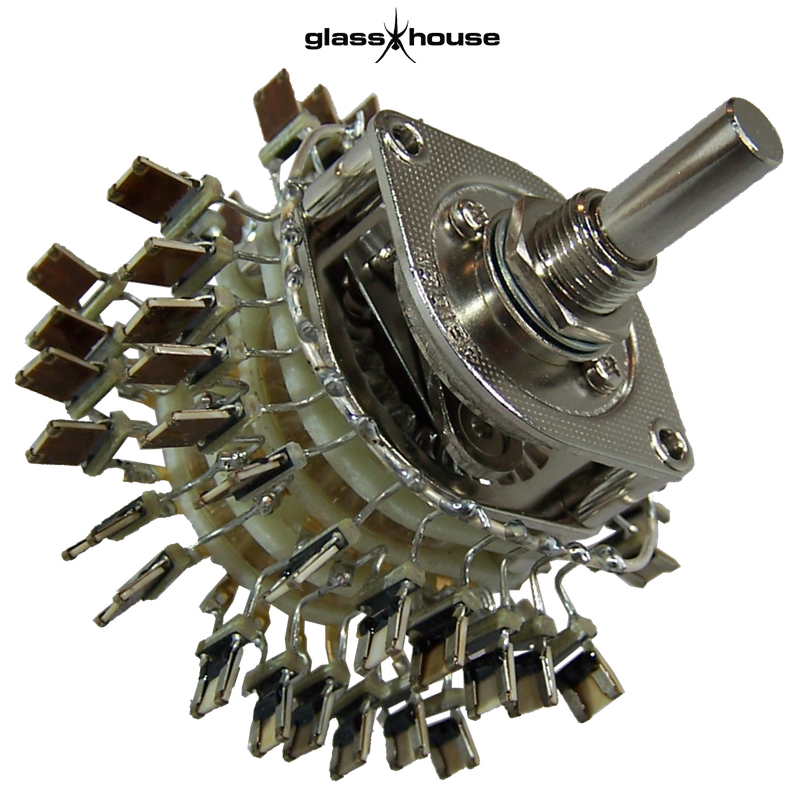Glasshouse Ladder stepped, mono Charcroft / Seiden

Here at Hificollective we always welcome requests for products that are not standard. So following on from the stereo Glasshouse Seiden / Charcroft ladder stepped attenuator over 3 years we were recently asked to build up a pair of 100K mono versions.
No problem - let's warm up the soldering iron!
To those of you unfamiliar with stepped attenuators, they are generally used to replace potentiometer volume controls. In basic terms these are made up of a conductive ring of varying resistance. The input (whole signal) is fed into one end, the other end is connected to ground and the signal output is fed from a contact that sweeps from one end of the ring to the other.
Most audio grade potentiometers such as Alps and TKD use a conductive plastic as their resistive element. These provide a clean sound with good channel matching. I do prefer the sound of carbon tracked potentiometers, they have more of a natural sound. However to find a stereo carbon tracked potentiometer with good channel matching is nigh on impossible. I'm not sure of the manufacturing technique with these tracks but makers such as TOCOS do struggle. Gone are the days of the good old ALPS black Beauty.
So one of the vital characteristics of a stereo volume control is the channel matching, whereby the actual resistances involved are identical on both channels. It goes without saying the sonic characteristic of the resistive track is equally important.
With the choice limited, many in the industry and DIY market have turned to stepped attenuators as a solution to improving their potentiometers. In layman terms a stepped attenuator is a totally differenct beast - it is a switch with resistors fitted so that at each step, the switch is connecting to a different set of resistors to achieve a different attenuation of the volume on the ouput.
To make things more complicated there are 3 types of stepped attenuators available.
- Shunt version - by far the most popular because only one wafer is required per channel (lower cost). Only two resistors and one switch contact are seen at each step. The downside is that the impedance is not constant throughout the sweep.
- Series version - imagine a long line of resistors that add up to the intended impedance. The signal input goes into the top and the bottom is the ground. The switch contact feeds off the joins of the resistors. Upside of this type is the constant impedance and only one switch contact is used per step. Down side - you are exposed to all the solder joins of all the resistors in the long chain.
- Ladder version - this uses the principle of having 2 specific resistors per step. The impedance is constant however there are 2 switch contacts per step. This version, to my ears, is a personal favourite.
So to celebrate our love of the ladder versions we have generated a youtube video for you to see what actually goes into making them. Enjoy!
Youtube video - CLICK HERE
To Read more - CLICK HERE
To buy - CLICK HERE
